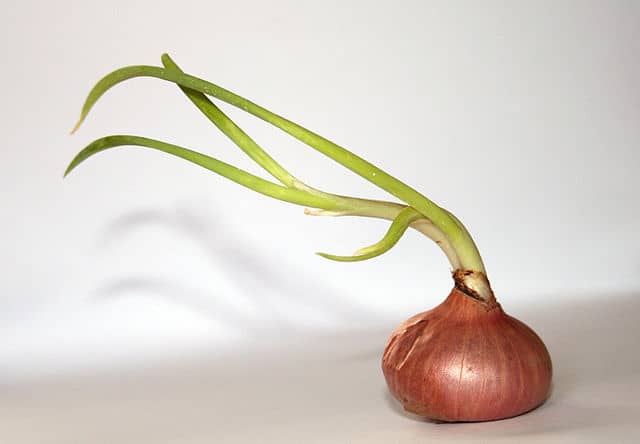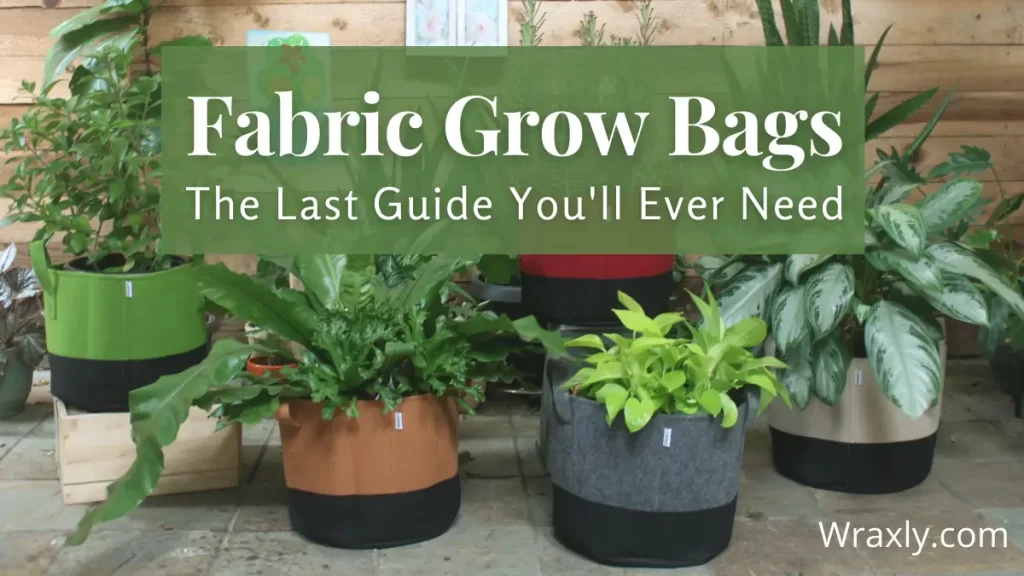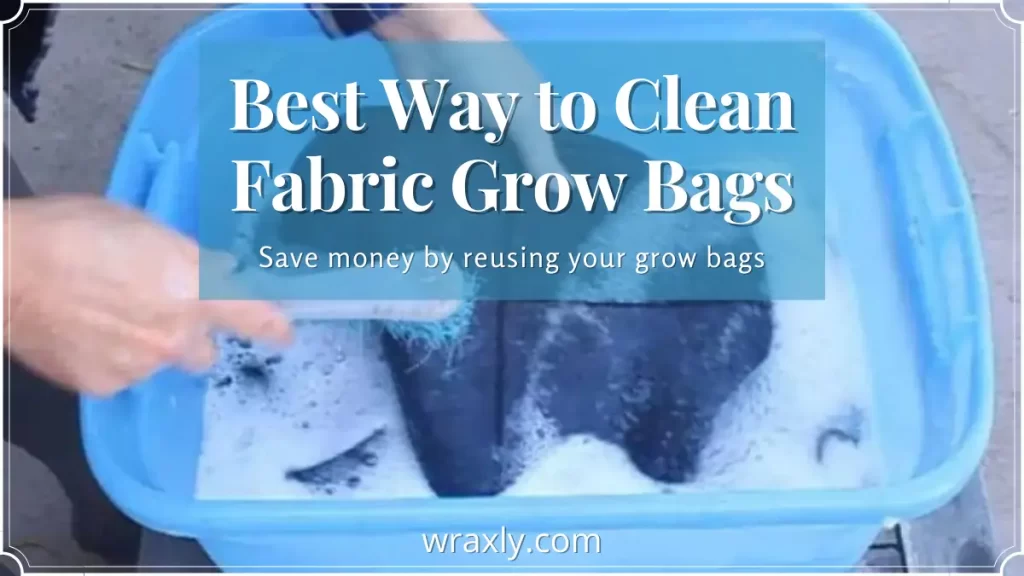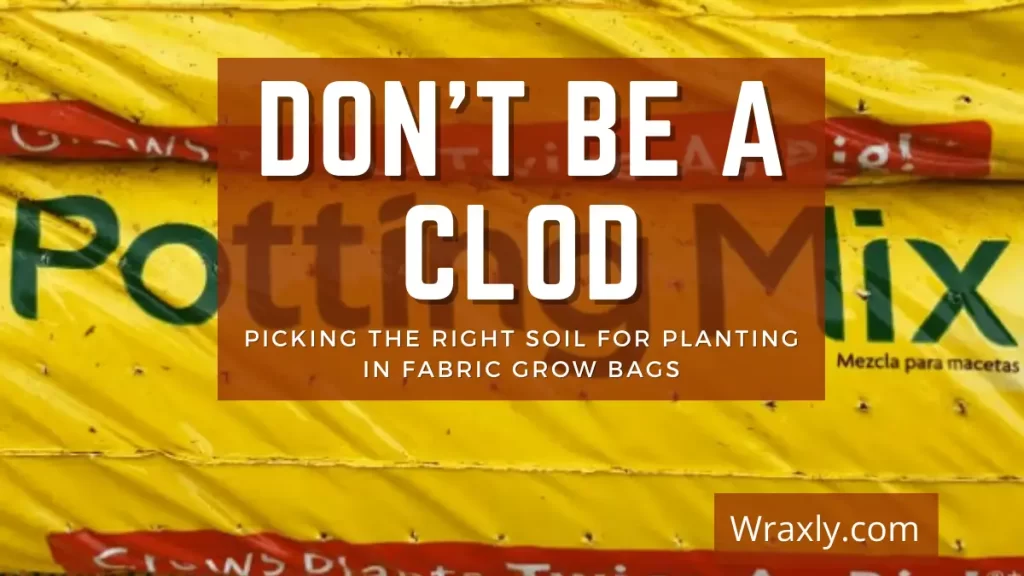Onions are one of the easiest vegetables that you can grow in your garden. With just a little initial work and some easy ongoing maintenance, you can enjoy a home-grown onion in little time at all.
While onions are extremely easy to grow, choosing to grow onions in a grow bag can make the process that much easier. In this article, we’ll give you a quick guide on how to grow onions in grow bags. Along the way, we’ll point out a few of the unique advantages that grow bags offer you in your gardening ventures.
![How to Grow Onions in a Grow Bag [Level 101]](https://wraxly.com/wp-content/uploads/2021/06/How-to-Grow-Onions-in-a-Grow-Bag-Level-101-1200-×-875-px-1024x747.webp)
Can You Grow Onions in a Grow Bag?
We’ll begin by addressing one of the obvious questions many beginners have on this topic. If you are wondering if it is possible to grow onions in grow bags, the answer is yes.
Not only that, using a grow bag has some benefits over planting directly in the ground as well as using another type of plant container. Among other traits, grow bags are permeable to allow for great drainage and air circulation. They also help manage root binding through the process of air pruning.
For those reasons and more, it is an excellent idea to use a grow bag to grow your onions as well as any other plant you hope to raise. With that issue out of the way, let’s proceed to learning how to grow onions in grow bags.
How to Plant Onions in Grow Bags
If you are an onions lover, you will be happy to hear that planting onions in your garden is a very straightforward process. The sections below will introduce you to the few simple steps you will need to complete.
Prepare the Soil
To grow the best onions, you’ll need to begin by creating the ideal soil conditions for onion growth. Onions love to grow in soil that has a slight acidity, ample amounts of organic matter, and fantastic drainage.
That last requirement is one reason why grow bags are so well suited for growing onions. The naturally permeable materials of a grow bag ensure that the soil inside never becomes overly saturated.
Recommended Onion Seeds
| Image | Title | Prime | Buy |
|---|---|---|---|
 | Vidalia Sweet Onion Seeds Organic Non-GMO 110/170 Days Spring/Fall Garden rsc2a1r (200+ Seeds) | Prime | Check My Price on Amazon |
Top | Onion Seeds for Planting - 8 Long and Short Day Varieties Yellow, Red, White, Sweet and Green Onions for Summer, Fall, Onion Seed by Gardeners Basics | PrimeEligible | Check My Price on Amazon |
 | Mixed Red, White and Yellow Onion Sets 8 oz | Naturally Grown Non-GMO Bulbs - Easy to Grow Onion Assortment | Prime | Check My Price on Amazon |
 | Sow Right Seeds - Red Creole Onion Seeds for Planting - Non-GMO Heirloom Packet with Instructions to Plant a Home Vegetable Garden - Grow Classic Purple Onions, Essential for Cooking | PrimeEligible | Check My Price on Amazon |
 | Yellow Sweet Spanish Onion Seeds for Planting, 750+ Heirloom Seeds Per Packet, (Isla's Garden Seeds), Non GMO Seeds, Botanical Name: Allium cepa, Great Home Garden Gift | PrimeEligible | Check My Price on Amazon |
 | 600+ Red Onion Seeds for Planting | PrimeEligible | Check My Price on Amazon |
 | Walla Walla Sweet Spanish Onion Seeds for Planting, 300+ Seeds Per Packet, (Isla's Garden Seeds), Non GMO Seeds, Botanical Name: Allium cepa, Great Home Garden Gift | PrimeEligible | Check My Price on Amazon |
 | yunakesa 400 Maui Sweet Onion Seeds CDN Short Day Spring / Fall Planting Easy | Prime | Check My Price on Amazon |
When to Plant Onions
When you set out to plant an onion, you will either be working with a seed, a seedling transplant, or an onion set. Each of these options represents a different stage in the onion’s two-year life cycle. However, regardless of which one you use, the timing for when you plant your onions will be the same.
It is best to plant onions when the ground has just become workable in the early spring. Onions will adapt well to the cool soil temperatures that are present during that season. An early spring planting will often make for a fall harvest in that same year.
Spacing and Depth for Onions
Spacing is another important matter that you should consider when planting onions. Again, it does not matter if you are planting onions that are seeds, seedlings, or sets. The general spacing guidelines will remain the same.
Aim to plant your onions about four to five inches apart. If you have multiple rows of onions, you should allow for just over one foot of space between each row.
Regarding depth, you should try to plant your onions about one inch below the soil’s surface. Planting too deeply or too shallow may cause your onion to fail.

Caring for Onions in Grow Bags
Now that you know how to plant an onion in a grow bag, we would like to share a few tips for ongoing onion care. Read on to see how you can keep your onions as healthy as possible.
Keep the Soil Moist
An onion’s water needs are moderate. However, their roots are not always efficient at absorbing water from the soil. For that reason, it is a good idea to monitor the soil moisture in your grow bag.
Attempt to always keep your soil relatively moist to give your onions the best chance of taking in the water they need. If you are worried about over-watering, using a grow bag should calm your nerves. Again, the fabric material of a grow bag will release water so that the soil does not become waterlogged.
Sunlight is a Must
Onions need to grow in an area of full sun. Usually, a minimum of six to eight hours of direct sunlight will lead to the best growth.
Again, grow bags offer an advantage here as well. Because grow bags are portable, you can easily move your onions to a new location if they fail to receive enough daily light.
Don’t Forget to Fertilize
Using fertilizer regularly is an effective way to ensure a good harvest of onions from your garden. Onions do best when they feed on a continuous-release fertilizer that has high amounts of nitrogen.
For the best results, fertilize your onions a few weeks after you plant them. Then you can establish a consistent schedule in which you apply fertilizer once every two weeks.
For Further Reading
Frequently Asked Questions
Before we conclude, we’d like to supplement the information you just learned about how to grow onions in grow bags. Below are a few answers to some of the most common questions that gardeners have on this topic.
Do Onions Need a Lot of Sun?
If you can’t provide an area of full sunlight, don’t attempt to grow onions in your garden. Six to eight hours of daily sunlight is one of the most important growth requirements for onions.
Do Onions Like Rich Soil?
Onions thrive in soils that are rich in organic matter. Before planting, amend your soils with an organic compost. Alternatively, you can choose to use a container such as a fabric grow bag. Such containers give you complete control over the quality of soil inside.
How Do I Know When My Onions Are Ready to Harvest?
Generally, it takes about three to four months for an onion to be ready to harvest. If you are looking for a physical indication of when this will happen, pay attention to the portion of the onion that grows above the ground. When this part of the plant begins to bend, it is a sign that your onions are ready to eat.

John Haryasz is a freelance writer and landscape designer. In the field of landscape architecture, he has contributed to many successful design projects throughout the country. As a writer, John specializes in creating captivating and informative web content. Through that work, he aims to share his design knowledge and promote engagement with the outdoor world.



![Container gardening for beginners [Buying guide]](https://wraxly.com/wp-content/uploads/2021/02/Container-gardening-for-beginners-Buying-guide-1200-1024x576.webp)